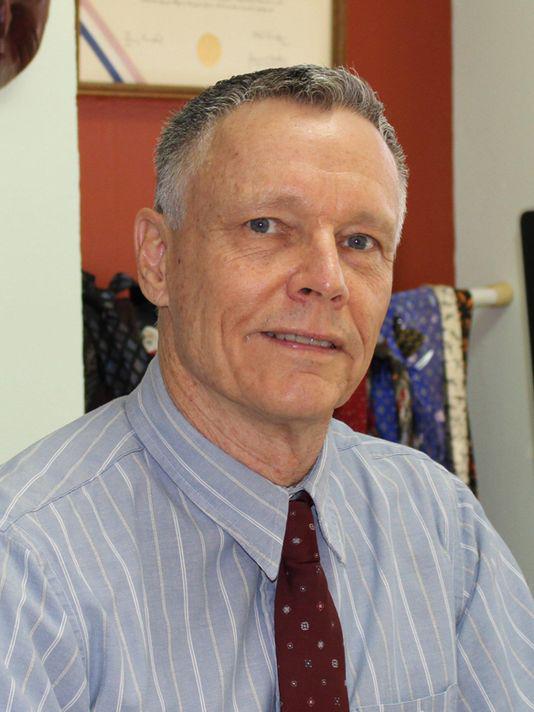|
Pesch: Child sexual abuse allegations prompt legal questions
By Bill Pesch
We, as a community, are finally having a conversation that we should have had years, if not decades, ago. That conversation centers around child sexual abuse within a religious setting. Because of recent events, we are currently focused on the Catholic church and more specifically on the allegations pending against Guam’s top Catholic leader, Archbishop Anthony Apuron. I am hopeful, as are others, that over the next few weeks and months this conversation will be broadened to include what legal action can be taken against any and all child sexual abusers who hold religious positions and those in leadership positions who did little or nothing to stop the abuse. In approaching this topic, let’s be honest with ourselves. The allegations of sexual abuse within the Catholic church on Guam should come as no surprise to most of us, especially those of us over the age of 50. In a private setting, most of us will admit that we know one or more minors who were allegedly abused by priests or deacons. Many of the alleged abuses occurred years ago and almost all went unreported and unpunished. Cultural, familial and religious constraints often prevented the minors from telling family and friends about the abuse. Unfortunately, often when they did confide in an adult, the adult insisted the matter remain secret. Seemingly, in the few cases of abuse that were brought to the attention of church officials, the alleged offender was simply transferred away from Guam to another unsuspecting parish. As a result, the abuse continued. A famous paraphrase aptly summarizes this situation: “We have met the enemy, and he is us.” We certainly aren’t alone in this dilemma. This pattern of abuse, silence, and cover up has frequently been repeated in Catholic parishes throughout the United States, and many other countries as well. Fortunately, at least within the U.S., the code of silence has been broken. It started with small cracks in the 1990s, then ruptured on Jan. 6, 2002 when the Boston Globe published a two-part series on horrific sexual abuse within the Greater Boston parishes. One priest alone, John J. Geogham, stood accused by 130 men of sexually abusing them during his 34-year tenure. His propensity for molesting pre-pubescent boys was well documented within the diocese. Yet, three cardinals and numerous bishops failed for three decades to permanently remove Geogham from the priesthood. He was simply “rehabilitated” then shuffled from one parish to another. Recently, this debacle was made into the movie, “Spotlight.”, which won the Academy Award for best film. For years, the Catholic church failed to adequately address this festering cancer despite the fact that church hierarchy was well aware of the situation. In 1985, the National Conference of Catholic Bishops received a report entitled, “The Problem of Sexual Molestations by Roman Catholic Clergy.” This report detailed the problem, underscored the potential monetary liability, and made specific recommendations to address the situation. The authors also highlighted the fact “that traditional outpatient psychiatric or psychological models alone DO NOT WORK.” Rather, pedophilia was a “lifelong disease with NO HOPE AT THIS POINT IN TIME for [a] cure.” [Original emphasis] The report went largely ignored. The church continued its distressing pattern of failing to report allegations of sexual abuse by priests to the police, instead referring them for treatment, then reassigning them to a new parish. Where the blatant wrongfulness and immorality of the situation failed to propel the church into action, monetary damages awarded in civil lawsuits has finally served as a catalyst for change. Outraged parishioners have filed a multitude of lawsuits against priests across the U.S. The cost to the church has been considerable. In fact, up through November 2015, Catholic dioceses throughout the U.S. had paid out a total $4 billion. Pope Francis has now declared zero tolerance for sexual abuse committed by priests and has initiated more effective means of reporting and prosecuting sexually abusive priests within the Church. The question now facing Guam is whether victims of alleged sexual abuse by priests committed in the past have a legal path today for pursuing justice in our courts. This isn’t an easy question to answer. The potential for success depends upon at least two key factors. The first is whether or not too much time has passed to file a lawsuit. In legal terms, this is called the statute of limitations. Second, whether victims can pursue monetary damages against the church itself in instances where those in leadership positions failed to protect children from predator priests. I’ll go into greater detail on these two issues next week. In addition, my recent conversation with attorney David Lujan, who represents several alleged victims of priestly sexual abuse, leads me to believe that very shortly he will unveil an alternative legal avenue to seeking justice for victims. He anticipates filing a legal action sometime this week.
|
.
Any original material on these pages is copyright © BishopAccountability.org 2004. Reproduce freely with attribution.
